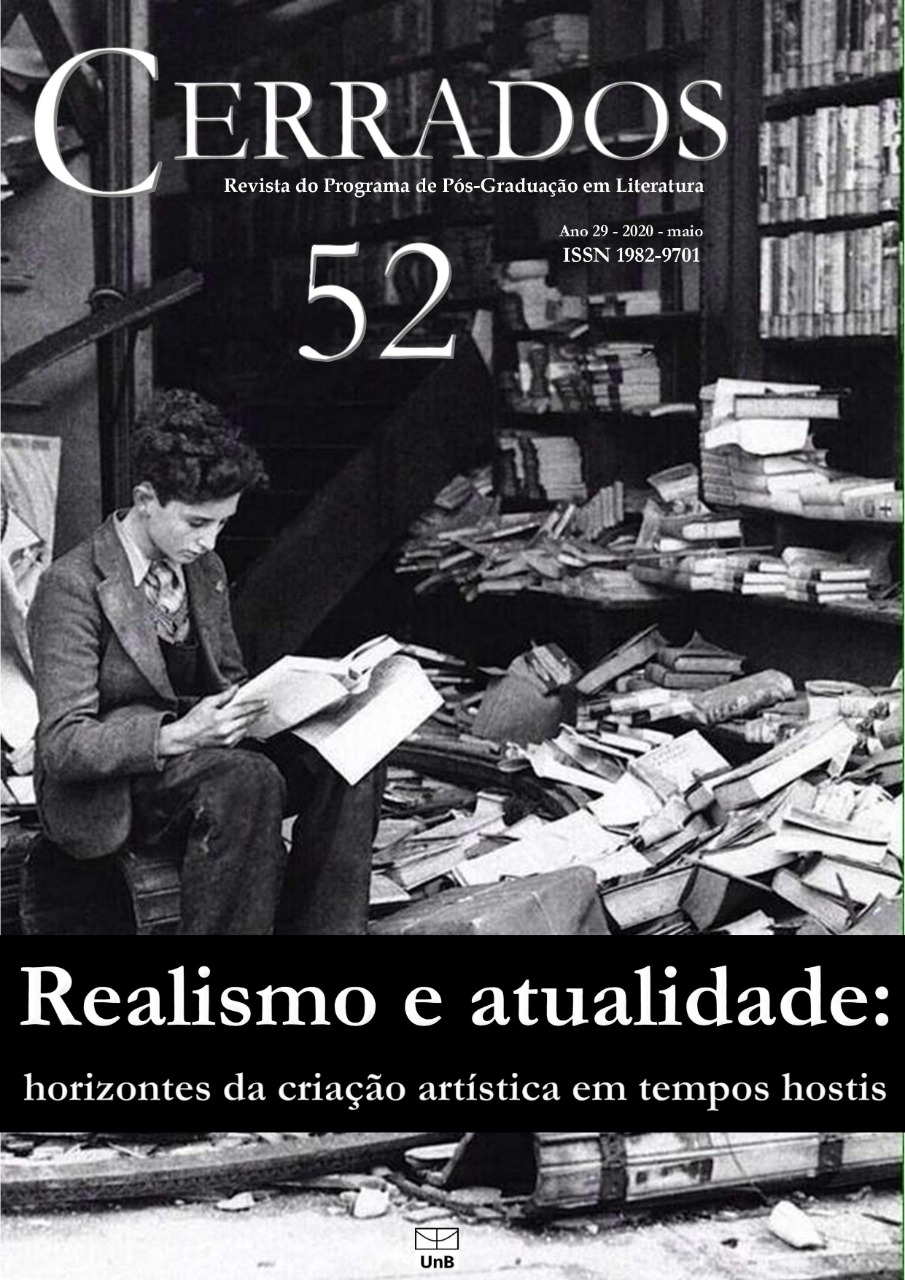O TRAJETO DE ERNEST HEMINGWAY RUMO AO REALISMO CRÍTICO DE ADEUS ÀS ARMAS
Palavras-chave:
Ernest Hemingway. Realismo crítico. Literatura americana. György Lukács.Resumo
Este artigo trata da obra romanesca de Ernest Hemingway desde seu início até a realização de Adeus à s armas, em 1929, seu terceiro romance. A intenção é descobrir os caminhos que levaram Hemingway rumo à conquista do realismo crítico que se verifica nesse romance. O artigo irá percorrer as investidas iniciais do romancista na construção da épica. Dentro dos seus limites, este texto não pretende transbordar a fronteira do romance, deixando de lado os contos que Hemingway escreveu. Ademais, seu limite termina em Adeus à s armas e não procura analisar a sua obra posterior.
Downloads
Referências
CARLI, Ranieri. A estética de György Lukács e o triunfo do realismo na literatura. Rio de Janeiro: Ed. UFRJ, 2012.
DODMAN, Trevor. “Going all to pieces”: A farewell to arms as trauma narrative. Twentieth Century Literature, v. 52, n. 3, pp. 249-274, 2006.
FLANAGAN, John T. Hemingway's Debt to Sherwood Anderson. The Journal of English and Germanic Philology, v. 54, n. 4, pp. 507-520, Oct., 1955.
GANZEL, Dewey. A farewell to arms: the danger of imagination. The Sewanee Review, v. 79, n. 4, pp. 576-597, Autumn, 1971.
GASPAROTTO, Bernardo; BARBOSA, Dalila. A constituição do herói de Adeus à s armas, de Ernest Hemingway. Revista Temática, ano XV, n. 3, NAMID/UFPB, pp. 85-99, Março/2019.
HENN, Judith Siegel. The disturbing of categories: Hemingway’s manipulation of Fielding, Turgenev, and Anderson in his parody The torrents of spring. Thesis for Doctor of philosophy. Departament of English language and literature. University of Haia. November, 2004.
HEMINGWAY, Ernest. O sol também se levanta. Rio de Janeiro: Civilização Brasileira, 1971.
____. As torrentes da primavera, seguido de Um gato à chuva e outros contos. Porto: Porto Editora, 2016.
____. Adeus às armas. Rio de Janeiro: Bertrand Brasil, 2017.
LUKÁCS, György. Ensaios sobre literatura. Rio de Janeiro: Civilização Brasileira, 1968.
____. Introdução a uma estética marxista. Rio de Janeiro: Civilização Brasileira, 1968a.
____. Solzhenitsyn. Cambridge: MIT Press, 1971.
____. Estética I: la peculiaridad de lo estético. Barcelona; México, DF: Grijalbo, 1982. 4 v.
MESSENT, Peter. Ernest Hemingway. New York: Palgrave Macmillan, 1992.
OLDSEY, Bernard. The genesis of A Farewell to arms. Studies in American Fiction, v. 5, n. 2, pp. 175-185, Autumn, 1977.
RITCHIE, Michael John. Ernest Hemingway’s early fiction: the emergence of a style and a point of view. Thesis of master in arts of English. Massey University, New Zealand, 1971.
RUSSELL, H. K. The catharsis in “A farewell to arms”. Modern Fiction Studies
, v. 1, n. 3: Ernest Hemingway, August, pp. 25-30, 1955.
STRONG, Amy. Race and identity in Hemingway’s fiction. New York: Palgrave Macmillan, 2008.
____. Race and Ethnicity: American Indians. In: MODDELMOG, Debra; GIZZO, Suzanne del (orgs). Ernest Hemingway in context. Cambridge: Cambridge University Press, 2013, p. 323-332.
TANGENDAL, Ross. Designed to Amuse: Hemingway's The Torrents of Spring and Intertextual Comedy. MidAmerica, v. 41, p. 11-22, 2014.
Downloads
Publicado
Como Citar
Edição
Seção
Licença
Copyright (c) 2020 Revista Cerrados

Este trabalho está licenciado sob uma licença Creative Commons Attribution 4.0 International License.
Proibida a reprodução parcial ou integral desta obra, por qualquer meio eletrônico, mecânico, inclusive por processo xerográfico, sem permissão expressa do editor (Lei n. 9.610 de 19/2/1998 )



